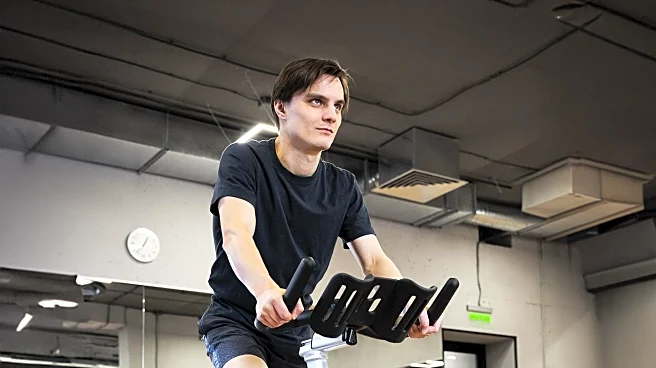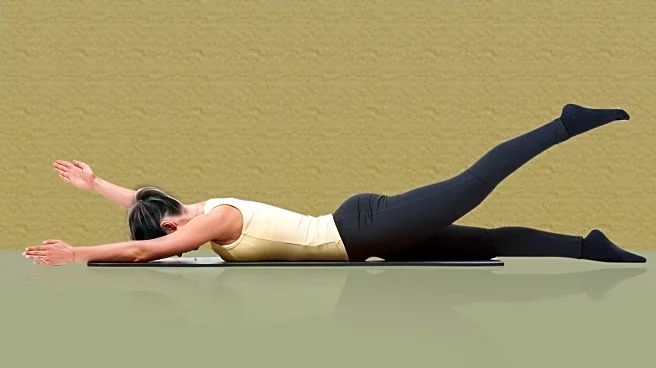What's Happening?
Zone zero training, a fitness trend focusing on low-intensity movement, is gaining traction for its accessibility and health benefits. This form of exercise involves activities that keep the heart rate below 50% of its maximum, such as gentle cycling, walking, and stretching. Fitness coach Kate Rowe-Ham explains that zone zero training is akin to active rest, providing a way to incorporate movement into daily life without the need for strenuous effort. The trend is particularly appealing due to its low barrier to entry, requiring no expensive gym memberships or equipment, making it accessible to a wide range of individuals. The practice is also linked to improved circulation, better mood, and reduced stress, contributing to overall well-being.
Why It's Important?
The rise of zone zero training highlights a shift towards more sustainable and accessible fitness practices. As many people lead sedentary lifestyles, incorporating low-intensity movement can help mitigate the health risks associated with prolonged sitting. This approach to fitness is especially beneficial for those new to exercise or those seeking active recovery between more intense workouts. By promoting regular, gentle movement, zone zero training supports longevity and reduces the risk of chronic diseases. It also aligns with broader public health goals of encouraging physical activity to improve health outcomes and reduce healthcare costs.
What's Next?
As zone zero training continues to gain popularity, it may influence fitness industry trends and public health initiatives. Fitness professionals might increasingly incorporate low-intensity exercises into their programs, catering to a broader audience. Public health campaigns could also emphasize the importance of daily movement, encouraging individuals to integrate zone zero activities into their routines. Additionally, further research may explore the long-term health benefits of this training approach, potentially leading to new guidelines for physical activity.
Beyond the Headlines
The growing interest in zone zero training reflects a cultural shift towards valuing wellness and sustainable fitness practices. This trend challenges the traditional emphasis on high-intensity workouts, offering an alternative that prioritizes health and longevity over performance. It also raises questions about how fitness is marketed and perceived, potentially leading to more inclusive and diverse representations of what it means to be active and healthy.











